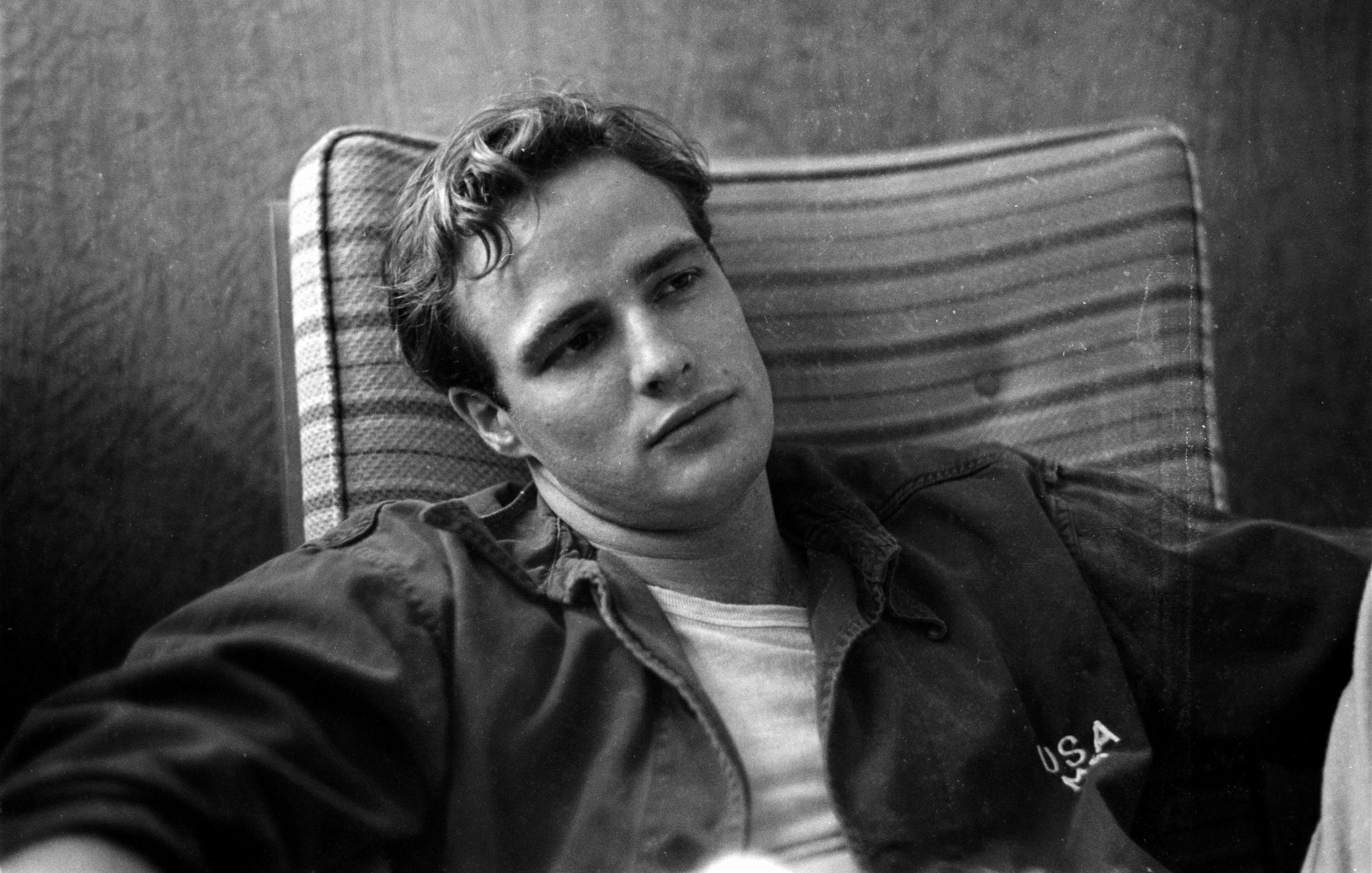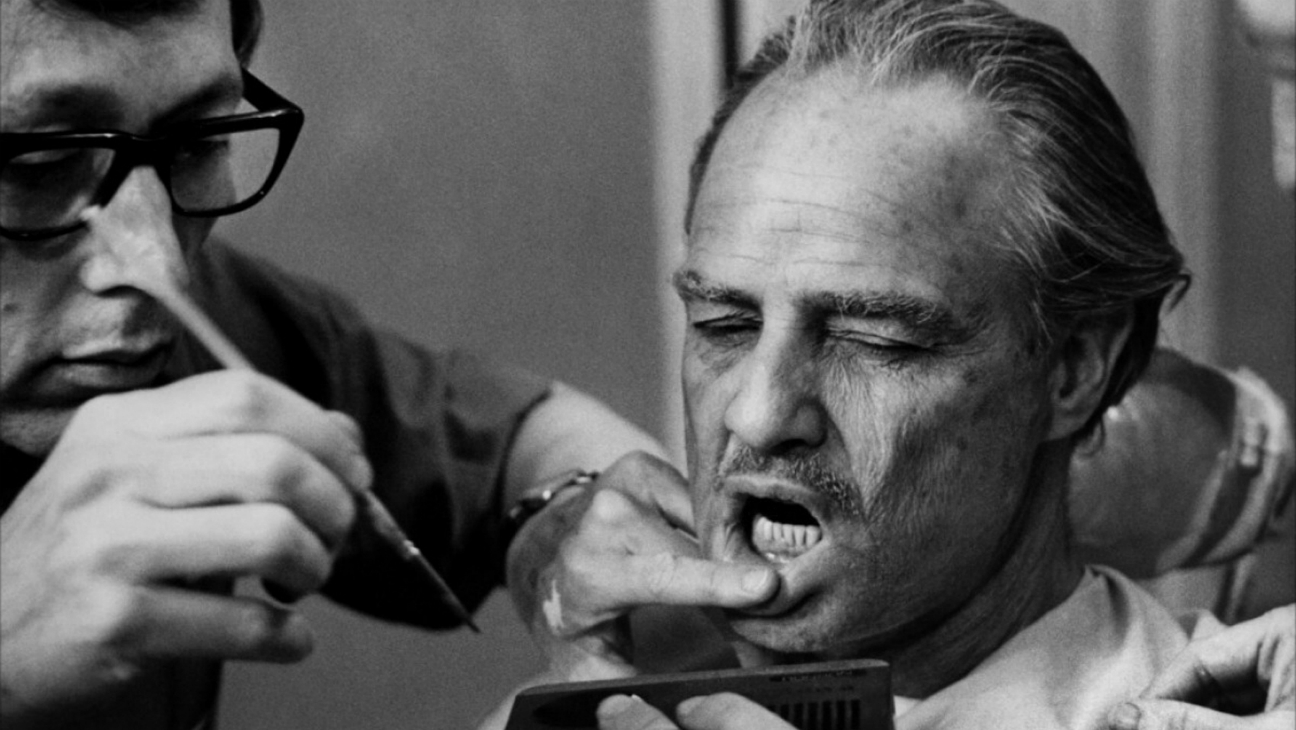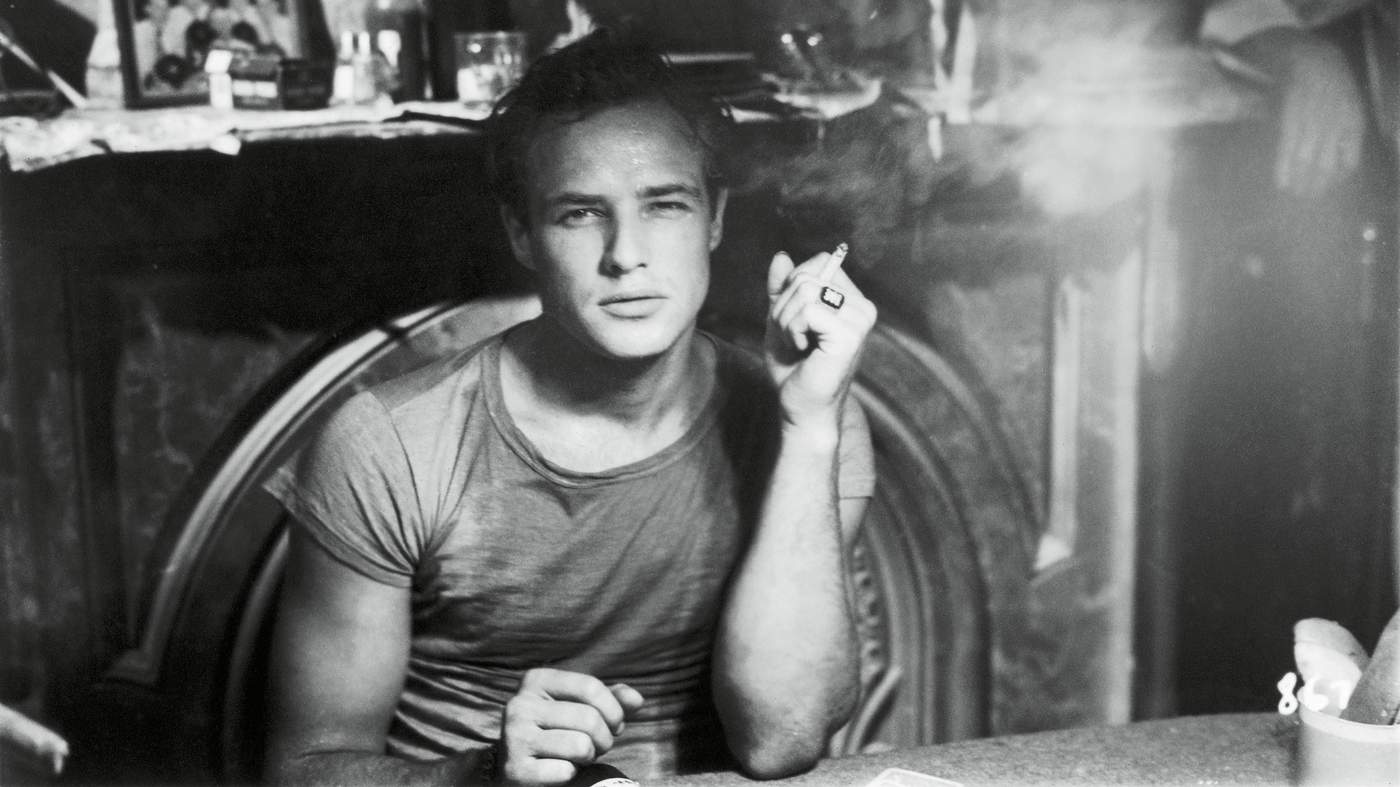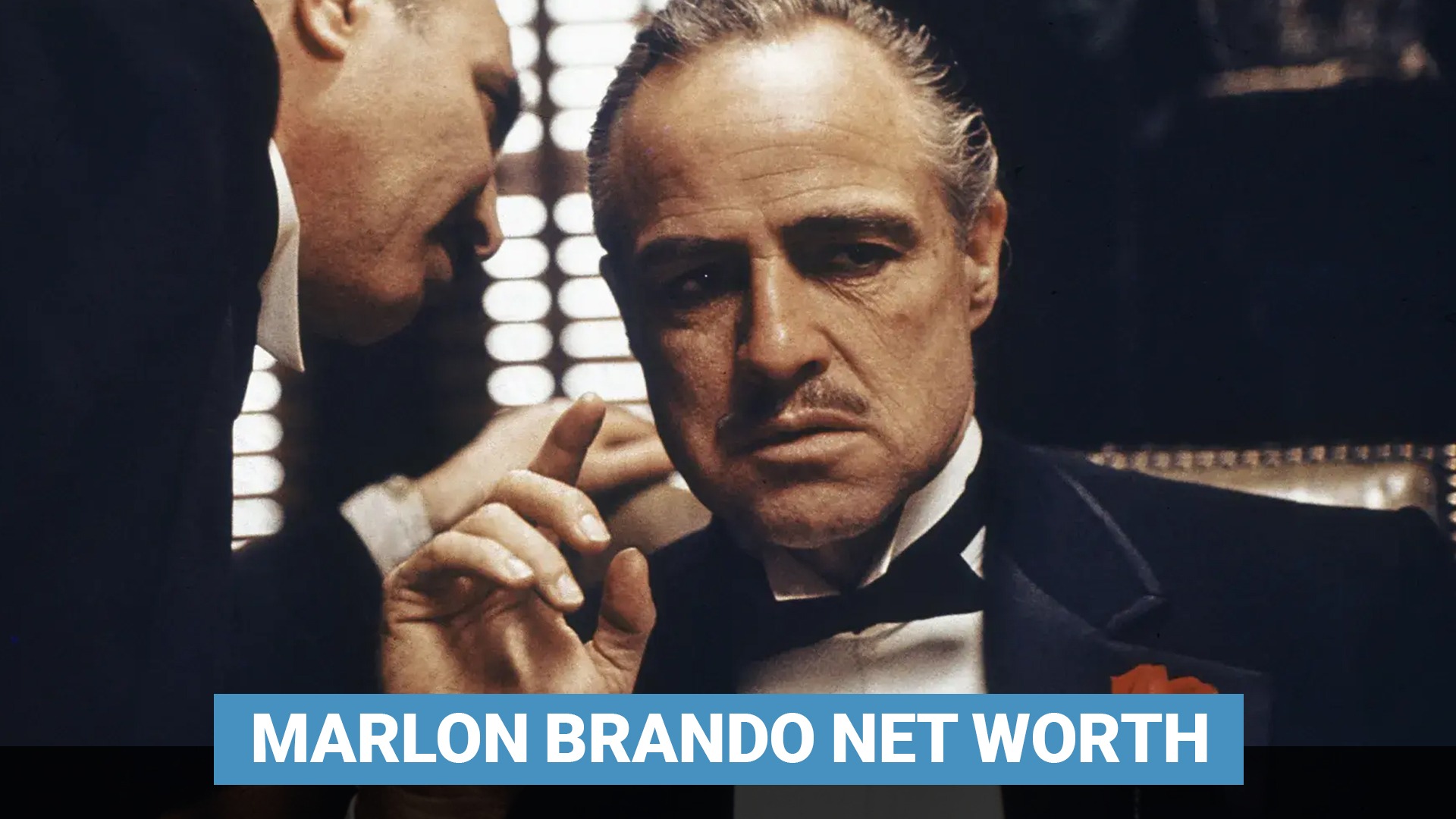The Untold Story Behind Marlon Brando’s Fortune: How Hollywood’s Rebel Built His Empire
Marlon Brando didn’t just change acting—he dismantled it and rebuilt it in his image. From brooding rebel in The Wild One to mafia patriarch in The Godfather, Brando didn’t follow Hollywood’s rules; he made his own. Alongside legends like Al Pacino and Robert Duvall, he reshaped screen presence with a raw intensity that still echoes through modern performances. But for all his iconic roles, Brando’s real-life financial empire has remained shrouded in contradiction.
How did an actor known for self-sabotage and long disappearances from the spotlight amass one of the most complex fortunes in entertainment history? The full picture of his paydays, legal battles, secret assets, and legacy licensing paints a portrait of a celebrity net worth that continues to grow—and stir controversy—long after his final curtain call.
Next Section: See how Brando’s chaotic early years, unforgettable performances, and infamous controversies shaped the man behind the myth.

A young Marlon Brando exudes effortless cool and charisma, sporting a USA jacket while seated with relaxed confidence.
Marlon Brando's Life Journey
Early Life
Born on April 3, 1924, in Omaha, Nebraska, Marlon Brando faced a turbulent childhood marked by his parents’ divorce and frequent school expulsions. These challenges prompted his family to relocate to New York City, where Brando’s interest in acting deepened.
He honed his craft under the mentorship of Stella Adler at the prestigious American Theatre Wing, immersing himself in the emerging Method acting technique. This rigorous training laid the groundwork for his revolutionary, emotionally raw performance style that would later transform Hollywood and influence generations of actors.
Career
Brando’s career took off with his powerful Broadway debut in A Streetcar Named Desire (1947), earning critical acclaim for his intense portrayal of Stanley Kowalski. He skyrocketed to stardom with On the Waterfront (1954), winning his first Academy Award and cementing his reputation as a leading man.
Throughout the 1950s and ’60s, he delivered iconic performances in Viva Zapata! (1952), The Wild One (1953), and Julius Caesar (1953). His portrayal of Don Vito Corleone in The Godfather (1972) became legendary, though he famously declined the Oscar in protest of Hollywood’s treatment of Native Americans. Brando was also a pioneer in actor compensation, commanding a $1 million salary for Mutiny on the Bounty (1962) and negotiating backend profit shares on blockbusters like Superman and Apocalypse Now, reshaping how actors were valued financially.

Marlon Brando immerses himself in a script, accompanied by his loyal dog lying peacefully at his side.
Personal Life
Marlon Brando’s personal life was as complex and dramatic as his film roles. He married twice—first to actress Movita Castaneda and later to Tarita Teriipaia, whom he met during the filming of Mutiny on the Bounty. Brando fathered eleven children, many amid public scrutiny and scandal, including the tragic events surrounding his daughter Christian’s 1990 involvement in the murder of Cheyenne’s boyfriend, followed by her suicide in 1995.
Beyond his biological children, Brando supported several others, including those with his longtime housekeeper, Maria-Cristina Ruiz, and adopted children as well. Known for his passionate activism, he frequently spoke out against racial injustice, notably refusing awards to protest the mistreatment of Native Americans in Hollywood, and his unpredictable nature made him a figure both revered and controversial.
Expert Insights About The Man Himself
Estate lawyer Caroline Barrett observed:
“An uneducated Midwestern farm boy had what every man ever dreamed of—an exotic island unto himself.”
And Sam Kashner writing in Vanity Fair noted:
“He frequently gave away money to friends, children, or ex‑wives—or funneled it into… ecological experiments.”
Death
Marlon Brando passed away on July 1, 2004, at UCLA Medical Center after a long battle with respiratory failure. His health had been severely compromised by pulmonary fibrosis and congestive heart failure, conditions worsened by diabetes and liver disease.
Despite his declining health in his later years, Brando remained a towering figure in the world of film, leaving behind a legacy that continues to influence actors and filmmakers worldwide. His passing marked the end of an era, but his contributions to cinema and culture remain deeply felt.
Next Section: One unexpected purchase would define Brando’s legacy far beyond the red carpet—keep reading.
Did You Know?
After achieving legendary status in Hollywood, Marlon Brando purchased the remote Polynesian atoll of Tetiaroa in 1966 for approximately $270,000. He transformed it into a personal sanctuary and ecological passion project, envisioning it as a self-sustaining, environmentally conscious retreat years ahead of its time. He funded early sustainable technology experiments and aimed to support scientific research. Today, his eco-vision lives on through the exclusive resort that bears his name—still operating under the principles he set in motion. (Source: Smithsonian Magazine)
Next Section: So how much was Brando actually worth when he died? Let’s break it down with hard numbers.
Marlon Brando's Financial Legacy & Net Worth
At his death in 2004, probate filings revealed Marlon Brando’s estate was valued at $21.6 million, including $18.6 million in real estate and about $3 million in private property and personal belongings. That figure, however, reflects only the documented assets—and not the full extent of his lifetime earnings or posthumous licensing. When factoring in ongoing income from his film library, name-and-likeness rights, and the leased Tetiaroa atoll, modern estimations of his celebrity net worth approach $100 million. (Source: The Guardian)
Brando’s income from his film work set new standards in Hollywood. His On the Waterfront salary in 1954 was reportedly $50,000 (approximately $620,000 today). With Sayonara in 1957, a base of $300,000 plus a 10% gross share yielded a robust return. In 1962, he shattered records as the first actor paid a flat $1 million fee for Mutiny on the Bounty.
His compensation strategy peaked with Superman (1978), where he earned $3.7 million plus backend points—possibly yielding tens of millions total. Similarly, Apocalypse Now delivered $2 million upfront and a 10% share of gross receipts, bolstering his financial position despite the film’s notorious production challenges.
Next Section: Brando’s fortune wasn’t spent on jets or jewelry—find out where the money really went.

Behind the scenes on The Godfather set, Marlon Brando prepares for his iconic role as Don Vito Corleone while getting his makeup applied.
How He Invested His Wealth
Brando’s wealth never supported ostentatious luxury. He did not collect yachts or personal jets. Instead, he prioritized real estate and environmental experimentation. In 1966 he acquired Tetiaroa—some sources cite $200,000, others $270,000—a purchase he turned into an ecological sanctuary, funding prototypes of solar and wind energy systems, and beginning archaeological preservation efforts. The island was appraised at roughly $8.6 million in his estate documents and is now home to an eco-resort that honors his conservationist vision.
In Los Angeles, Brando owned a Mulholland Drive estate known as "Brandoville." That Beverly Hills compound—valued at around $10 million—was sold after his death to Jack Nicholson for approximately $6.1 million. The property included artwork, manuscripts, and personal memorabilia that collectively added several million dollars more to the estate’s valuation. (Source: Los Angeles Times)
Perhaps most revealing was his pattern of giving. He frequently handed out large sums—often undocumented—to family members, ex-wives, staff, and activists. Sam Kashner wrote that Brando gave away money almost as quickly as he earned it, funding causes that ranged from Native American rights to environmental projects on Tetiaroa. These habits significantly reduced the liquid assets in his estate, leaving only about $3 million in cash upon his death.
Marlon Brando: Estate & Net Worth Breakdown
| Asset Type | Estimated Value at Death | Notes |
|---|---|---|
| Cash & Liquid Assets | ~$3 Million | Reported in probate filings |
| Real Estate (LA home, Tetiaroa) | ~$18.6 Million | Included in estate inventory |
| Personal Property & Artifacts | ~$1–3 Million | Manuscripts, memorabilia, artwork |
| Total Estate Value | $21.6 Million | Court-submitted figures (2004) |
| Estimated Net Worth (Lifetime) | ~$100 Million | Includes deals, licensing, and royalties |
Marlon Brando: Still Making Headlines
While Brando passed away in 2004, his legacy continues to capture attention—most recently with news coverage highlighting habitat restoration efforts on Tetiaroa. French Polynesian conservation groups and the Tetiaroa Society have reported progress on a multi-year rat-eradication and native species repopulation project, sparking renewed local and ecological media interest within the past two weeks.
Next Section: Brando’s fortune was just one part of the story—see what still sets him apart from every other Hollywood icon.
People Also Ask
Who inherited Marlon Brando’s estate and what is it worth today?
Probate documents show a residential estate and assets totalling $21.6 million were allocated among Brando’s executors: producer Mike Medavoy, business manager Larry Dressler, and friend Avra Douglas.
Nine of his children received shares, while longtime housekeeper Angela Borlaza sued the estate for oral promises and settled for $125,000. Today, licensing income, Tetiaroa lease proceeds, and film royalties generate approximately $9 million annually—suggesting the estate’s value has increased considerably.
Did Marlon Brando ever own a yacht or private plane?
No credible records or biographies document that Brando purchased yachts or jets. He directed his funds instead into real estate and ecological efforts, especially on Tetiaroa.

A young Marlon Brando captivates with his intense gaze, casually smoking while seated and staring straight into the camera.
What was Brando’s biggest single payday?
His biggest immediate paycheck was for Superman in 1978—$3.7 million plus backend profit participation—which likely earned him tens of millions in total returns.
Did he give away most of his money?
Yes. Brando gained a reputation for philanthropy and frequent gifts: to family, staff, causes, and environmental experiments. Legal sources note his cash holdings were surprisingly modest at death, due to this generosity.
Does his estate still get royalties?
Even after Marlon Brando’s death, his estate continues to generate income through royalties and licensing deals related to his extensive body of work. Films like The Godfather remain perennial favorites, bringing ongoing revenue from broadcasts, streaming platforms, and merchandise. Additionally, Brando’s image and legacy are carefully managed, ensuring that his influence—and the financial benefits tied to it—endure well beyond his lifetime. This ongoing income reflects the timeless appeal of his performances and his lasting impact on popular culture.
Final Thoughts
Brando redefined what celebrity net worth could mean—balancing groundbreaking paydays with philanthropic impulse and environmental innovation. The $21.6 million documented in his will was only the surface of a far deeper legacy: film royalties, licensing, and an ecological vision on Tetiaroa that continues to produce income and impact. His life—and his wealth—remain deeply instructive, extending well beyond the screen.

Marlon Brando delivers a powerful performance as Don Vito Corleone, capturing the commanding presence that made the role legendary.
Explore More Relevant Net Worth Articles:
Martin Scorsese's Net Worth 2025: The Fortune Behind The Greatest Filmmaker Of All Time.
Paul Sorvino's Net Worth: Exploring The Life, Legacy & Wealth Of An Acting Legend In 2025.
Ray Liotta's Net Worth: A Deep Dive Into A Hollywood Legend In 2025.
Disclaimer: How We Estimate Net Worth
Our net worth figures are estimates based on publicly available information, including real estate records, reported earnings, public filings, industry data, and expert analysis. Because private financial details are rarely disclosed, these numbers reflect approximations rather than precise amounts. We regularly update our estimates to incorporate new information and ensure ongoing accuracy.
Curious to learn more about the legends who shaped the entertainment landscape? Explore our net worth section now for exclusive updates and deep dives into the lives and fortunes of your favorite icons!














